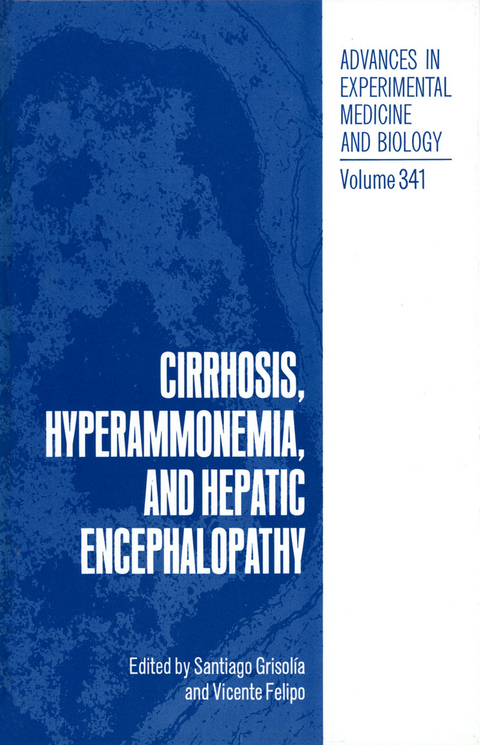
Cirrhosis, Hyperammonemia, and Hepatic Encephalopathy
Springer-Verlag New York Inc.
978-1-4613-6058-2 (ISBN)
Control of Urea Synthesis and Ammonia Detoxification.- Brain Metabolism in Hepatic Encephalopathy and Hyperammonemia.- Ammonia Metabolism in Mammals: Interorgan Relationship.- Clinical Manifestations and Therapy of Hepatic Encephalopathy.- Nutritional Considerations in Patients with Hepatic Failure.- Do Benzodiazepine Ligands Contribute to Hepatic Encephalopathy?.- Effects of Hyperammonemia on Neuronal Function: NH4+, IPSP Cl—Extrusion.- Activation of NMDA Receptor Mediates the Toxicity of Ammonia and the Effects of Ammonia on the Microtubule-Associated Protein MAP-2.- Modulation of the Exocytotic Release of Neurotransmitter Glutamate by Protein Kinase C.- Controls of Cerebral Protein Breakdown.- Two Different Families of NMDA Receptors in Mammalian Brain: Physiological Function and Role in Neuronal Development and Degeneration.- Glanglioside GM1 and its Semisynthetic Lysogangliosides Reduce Glutamate Neurotoxicity by a Novel Mechanism.- Contributors.
| Reihe/Serie | Advances in Experimental Medicine and Biology ; 341 |
|---|---|
| Zusatzinfo | VIII, 148 p. |
| Verlagsort | New York, NY |
| Sprache | englisch |
| Maße | 178 x 254 mm |
| Themenwelt | Medizinische Fachgebiete ► Chirurgie ► Viszeralchirurgie |
| Medizinische Fachgebiete ► Innere Medizin ► Gastroenterologie | |
| Medizinische Fachgebiete ► Innere Medizin ► Hepatologie | |
| Medizin / Pharmazie ► Medizinische Fachgebiete ► Neurologie | |
| Naturwissenschaften ► Biologie ► Botanik | |
| Naturwissenschaften ► Biologie ► Zoologie | |
| ISBN-10 | 1-4613-6058-7 / 1461360587 |
| ISBN-13 | 978-1-4613-6058-2 / 9781461360582 |
| Zustand | Neuware |
| Haben Sie eine Frage zum Produkt? |
aus dem Bereich


